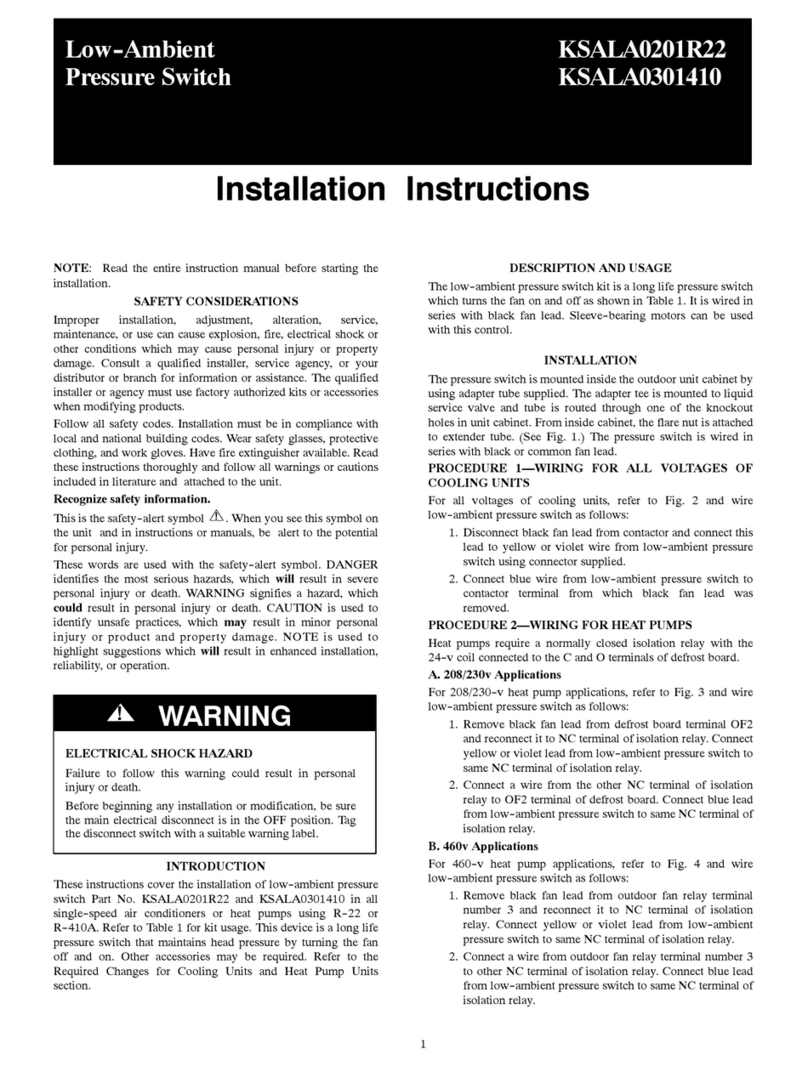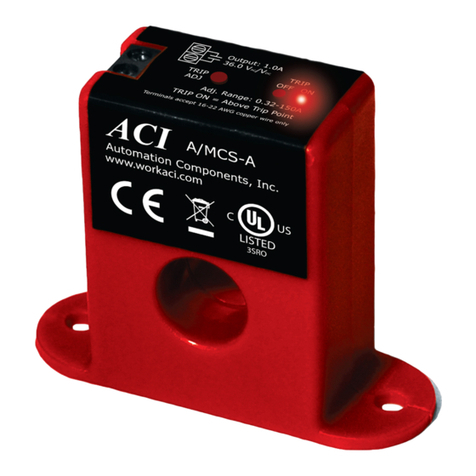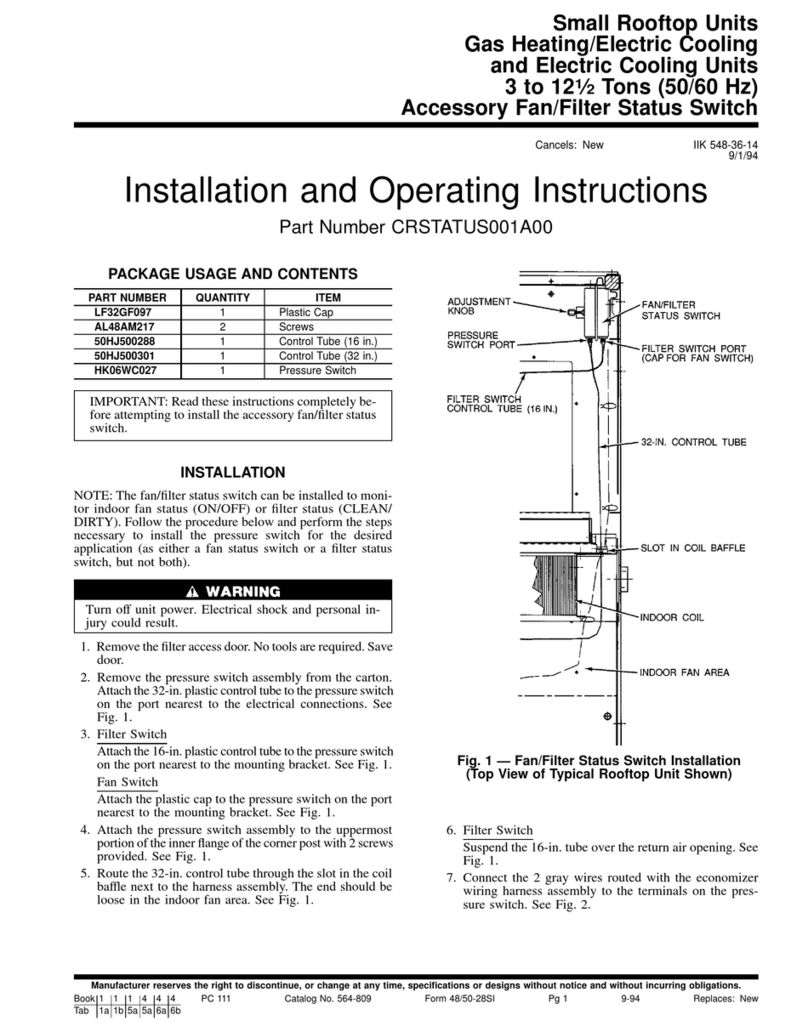
Adjustable Current Switches
Installation and Operation
#NSA-A/ACS2, NSA-A/ASCS2, NSA-A/ASCS2-L –11/14/2019
Specifications subject to change without notice.
Catalog No. 11-808-743-01 Page 1of 7
Overview
The Adjustable Current Switches are designed for use in any AC current
monitoring application in which you are looking to monitor a particular piece of
equipment for equipment failure, preventative maintenance, status, and
electrical load status. The current switches should be installed on the line side
of the power to the electrical equipment. The current switches are available in
both solid and split-core versions which also includes a Patented 35 mm Din
Rail mounting foot for easy installation in panel mount applications. The solid-
core versions are a great choice for new installations or OEM applications in
which cost sensitivity, lower trip points and environmental issues may be of
concern. The split-core version of the current switches work great in retro t
applications and for use on service technicians’ vehicles since one part will
work in most applications and can be easily installed without disconnecting any
wires. The adjustable current switches can be used to determine the run time of
your equipment as well as basic load trending applications where you want to
know when how long your piece of equipment runs when logging the contact closures on your building management
system or PLC.
Applications: Overload Conditions, Underload Conditions, Normal Operating Conditions, Broken Belts, Belt Slippage,
Locked Rotors, Equipment Failure, Fans, Pumps, Compressors, Motors, Ovens, Industrial Equipment, Lighting Status and
Usage, Electrical Load Status, Local Alarms (Strobes and Audible Alarms), Preventative Maintenance Scheduling
Part Numbers
NSA-A/ACS2 NSA-A/ASCS2 NSA-A/ASCS2-L
Specifications
Operating Frequency Range:
NSA-A/ACS2: Solid | NSA-A/ASCS2: Split | NSA-A/ASCS2-L: Split
Induced from the Monitored Conductor
Trip Point Style | Trip Point:
Adjustable
NSA-A/ACS2: 0.5 to 220A | NSA-A/ASCS2: 1.5 to 220A
NSA-A/ASCS2-L: 0.6 to 180A
10% of trip point, typical
“Status” Contact “On” Resistance | “O” Resistance:
< 10 Ohms (tripped) | > 1 Meg Ohms (Open)
Red LED (Current above Trip Point)
Blue LED (Current Below Trip Point)
35 mm (U.S. Patent No. 7,416,421)
Operating Temperature Range:
Operating Humidity Range:
Recommended Storage Temperature | RH Range:
41 to 95°F (5 to 35°C) | 40% to 85% RH, non-condensing
Enclosure Material | Flammability Rating:
PC/ABS (Polycarbonate/ABS Blend) | UL94-V0
2 Position, Screw Terminal Block (Not Polarity Sensitive)
16 to 22 AWG (1.31 mm2to 0.33 mm2) Copper Wires only




























